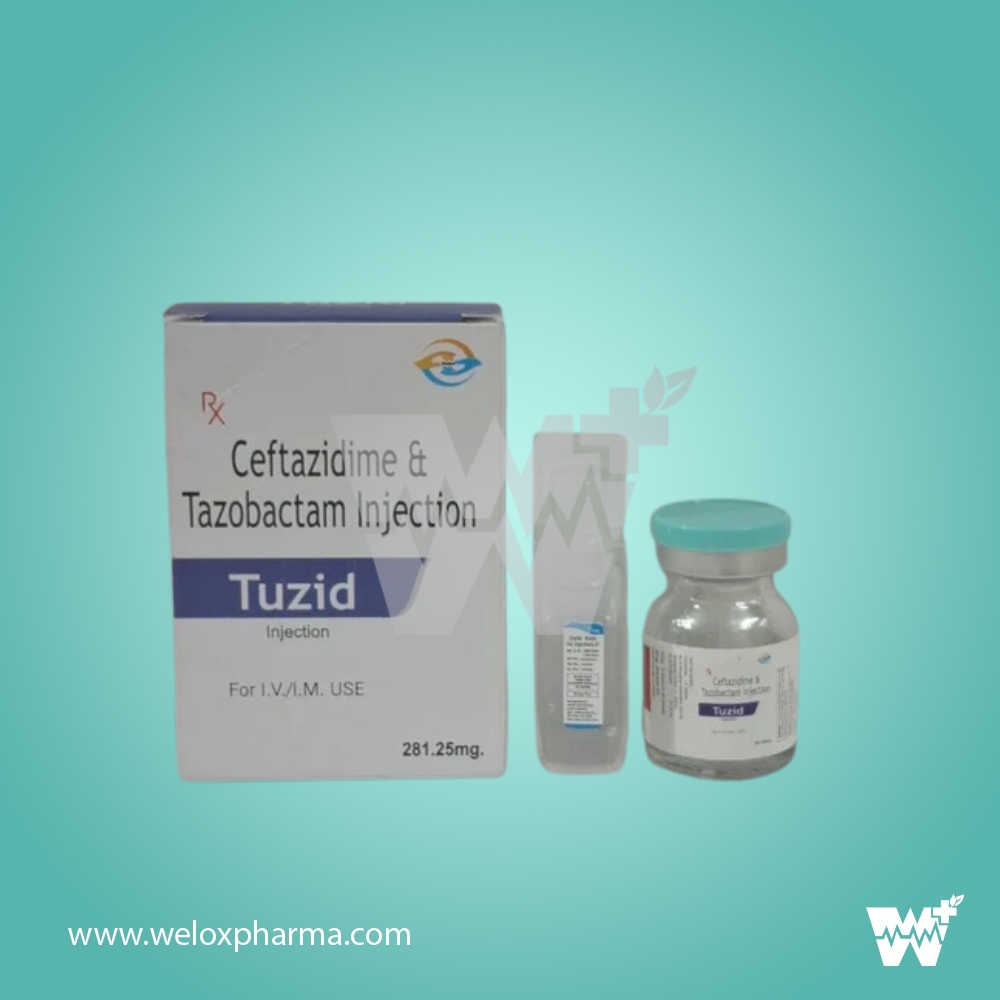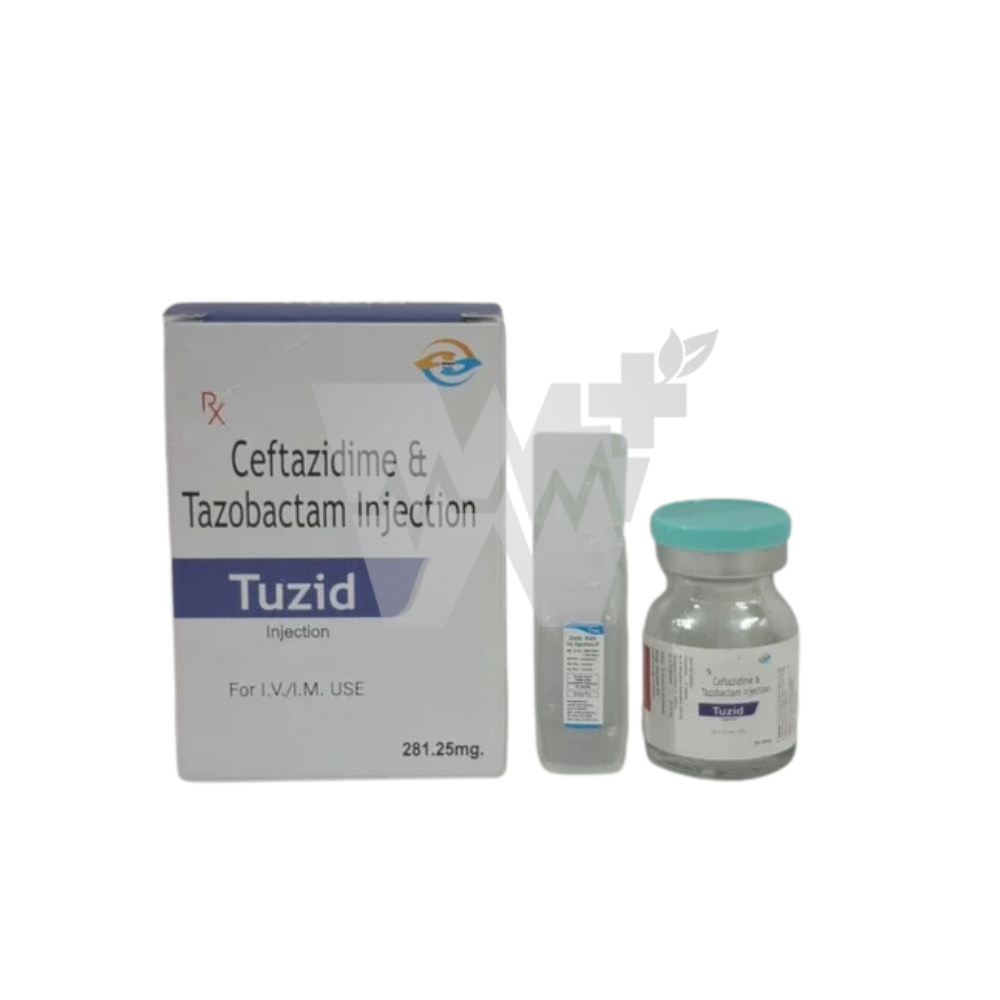



Introduction to Tuzid Ceftazidime & Tazobactam Injection
Tuzid is a combination of Ceftazidime and Tazobactam, offering broad-spectrum antibacterial activity. This injectable formulation is used in hospitals and clinical settings for treating severe bacterial infections, especially those caused by resistant organisms.
Uses of Tuzid Ceftazidime & Tazobactam Injection
Severe Bacterial Infections: Effective in treating serious infections such as pneumonia, urinary tract infections, skin and soft tissue infections, and intra-abdominal infections.
Nosocomial Infections: Utilized in managing hospital-acquired infections where resistant bacteria are prevalent.
Febrile Neutropenia: Often used in patients with febrile neutropenia, a condition of low white blood cells, as an empirical therapy while awaiting culture results.
Benefits of Tuzid Ceftazidime & Tazobactam Injection
Broad-Spectrum Efficacy: The combination of Ceftazidime and Tazobactam covers a wide range of gram-positive and gram-negative bacteria, including those resistant to other antibiotics.
Enhanced Activity Against Resistant Strains: Tazobactam inhibits beta-lactamase enzymes produced by resistant bacteria, thereby enhancing the effectiveness of Ceftazidime.
Reduced Risk of Resistance Development: The dual action of the drug combination helps in reducing the likelihood of resistance development.
Versatile Use in Severe Infections: Suitable for use in various severe and complicated infections, providing a reliable option in critical care settings.
Safe and Effective Treatment: Generally well-tolerated with a known safety profile, making it a preferred choice in managing complex infections.
Mechanism of Action of Tuzid Ceftazidime & Tazobactam Injection
Ceftazidime: A cephalosporin antibiotic that inhibits bacterial cell wall synthesis, leading to cell lysis and death. It is effective against a broad range of bacteria, including Pseudomonas aeruginosa.
Tazobactam: A beta-lactamase inhibitor that protects Ceftazidime from degradation by beta-lactamase enzymes produced by certain resistant bacteria. This enhances the antibiotic's efficacy and extends its spectrum of activity.